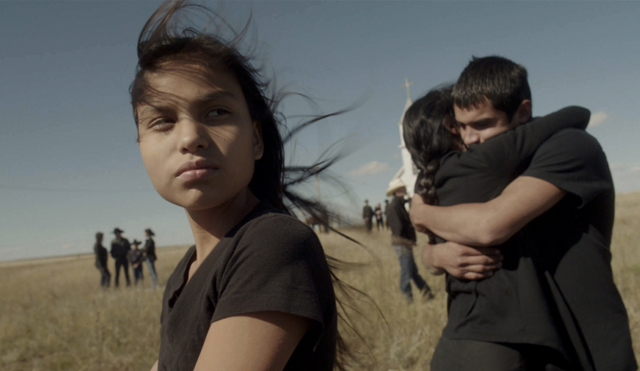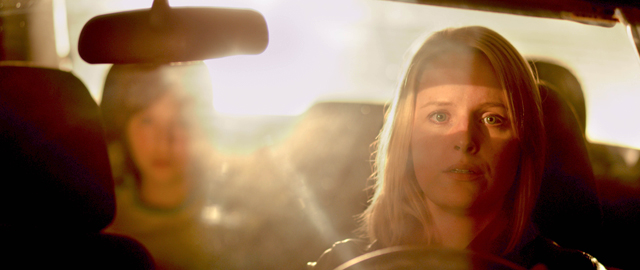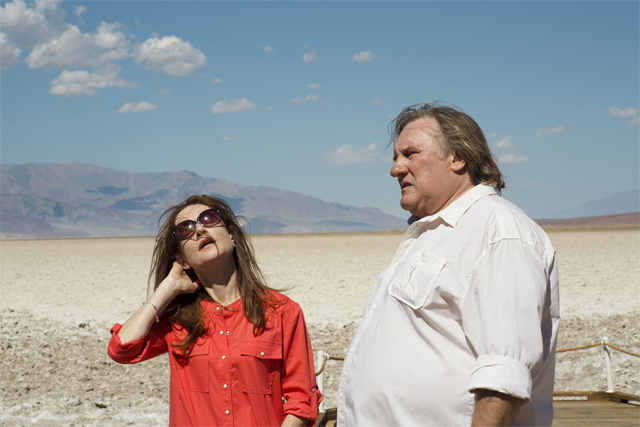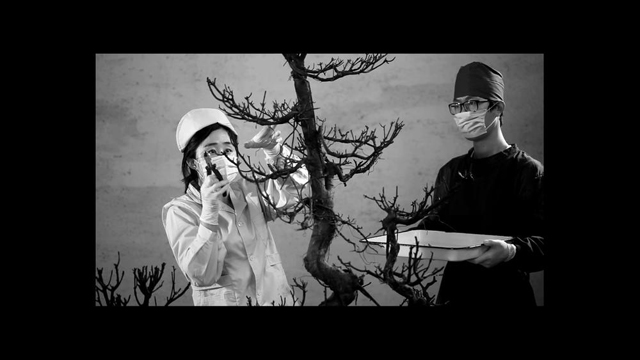November is so packed with fantastic film programs that the more manic moviegoers among us will be quoting the young Jackson Browne before month’s end. Even those with “normal” appetites will have ample cause to include the cinema gods in their Thanksgiving toast.
How abundant is the harvest? The Wim Wenders retrospective on Mondays at the Castro (Wim Wenders: Portraits Along the Road) didn’t make my top five, nor did this year’s roundup of recent primo Italian movies (Nov. 11-15 at the Vogue). I didn’t have room for the local premieres of the latest lovely 16mm works by S.F.’s nationally renowned experimental filmmaker (Films by Nathaniel Dorsky: How Delicately the Light Imbues Our Fleeting Life, Nov. 12-15 at YBCA), or the S.F. Film Society’s annual survey of recent Hong Kong cinema (Nov. 14-18 at the Vogue). Likewise, you’re on your own to track down ducats to the S.F. Symphony’s performances of Danny Elfman’s score in tandem with Henry Selick’s 1993 stop-motion tour de force, Tim Burton’s The Nightmare Before Christmas (Nov. 25, 27-28 at Davies Symphony Hall). What could possibly match these temptations? Read on.

Nobody is better at post-screening Q&As than documentary filmmakers. Whether they’re expounding (and expanding) on the issues at the center of their movie, spilling behind-the-camera anecdotes or riffing on the role of nonfiction filmmaking in a democracy, they are consistently compelling figures. The S.F. Film Society’s first-ever Doc Stories shindig (Nov. 5-8 at the Vogue), brings a slew of top-tier directors to town with their latest films: Sharmeen Obaid-Chinoy (Song of Lahore), Liz Garbus (What Happened, Miss Simone?), Matthew Heineman (Cartel Land), Kent Jones (Hitchcock/Truffaut), Laurie Anderson (Heart of a Dog) and Amy Berg (Janis: Little Girl Blue). (The last two are likely already sold out, but you can catch them in local theaters starting Nov. 13 and Dec. 4, respectively).

For 40 years now, through high tides and low, the American Indian Film Festival (Nov. 6-13 at the Metreon) has held its ground on behalf of a culture that’s rarely and barely acknowledged in its own country. (On Thanksgiving Day, take a moment to remember that the football team in the nation’s capital still calls itself the R******s.) The movies tend to be a mix of grit and poetry, from the sibling drama Songs My Brother Taught Me (set in, around and beyond the Pine Ridge Indian Reservation in poverty-plagued South Dakota) to the documentary We’re Still Here: Johnny Cash’s Bitters Tears Revisited (which revives the spirit of Cash’s gusty but largely forgotten 1964 album.) The stakes are a tad higher at the AIFF than at most festivals.

You might say that horror flicks — which play concertos with our fears — have nothing on the line beyond the audience’s entertainment. But genre filmmakers also play with conventions and taboos, and arguably have the most freedom to weave a critique of society in among the scares. Canadian octogenarian Larry Kent’s latest, She Who Must Burn, imagines the disturbing lengths to which a fanatical evangelical family will go to persecute a counselor at a shuttered family clinic. It’s likely to be one of the most talked–about films at Another Hole in the Head (Nov. 6-16 at New People Cinema), a festival that revels in pushing the limits of silver-screen thrills.

Two of November’s weekends are already booked solid for Francophiles, and they assuredly aren’t complaining. The French Had a Name For It 2: Lovers and Other Strangers (Nov. 6-9 at the Roxie) crams a dozen long-lost noirs into 78 hours. Surely that’s more betrayal, heartbreak and Gitanes than anyone can digest in concentrated form, so prepare accordingly. (No, flasks are not allowed in the Roxie.) On a more color-full note, the best French-lingo films of the last year unspool in the S.F. Film Society’s annual French Cinema Now roundup (Nov. 19-22 at the Vogue). Contemporary screen romances don’t always end well, remember, even for those who speak the language of love. But you can’t bring a flask into the Vogue, either.

Can we agree that the dearth of female directors in Hollywood is a travesty? Change comes way too slowly, so kudos to local journalist and programmer Ruthe Stein for saluting a woman who ran the set brilliantly in the not-so-distant past. Ida Lupino made it first as an actress before directing seven films and 100-plus episodes of television in the 1950s and ’60s. Two of those features, The Bigamist (the lone film in which she directed herself) and The Hitch-Hiker, screen Nov. 22 at the Balboa. Another wonderful thing about Ida Lupino: Forgotten Pioneer is that it’s free; just drop a line to adam@cinemasf.com (two tickets per request).

It isn’t as dangerous to the health of Chinese moviemakers as it used to be to operate outside the sanctioned film industry. The big hurdle is getting their work seen, which involves a kind of almost-too-small-to-matter circuit of galleries, universities and festivals. YBCA, S.F. Cinematheque and CAAM (the Center for Asian American Media) provide Bay Area venues for the more innovative and powerful recent indie films. Huang Ji’s award-winning autobiographical saga, Egg and Stone (Nov. 19 at YBCA), evokes the complex emotions accompanying a teenage village girl’s sexual awakening. A trio of programs dubbed Cinema On the Edge (Nov. 22 at the Victoria) showcase Ai Weiwei and several other filmmakers who aren’t household names here — yet. These artists are worth sampling not only for the out-of-the-mainstream voices and viewpoints that inform their work, but for the techniques and modes of storytelling they employ. Let’s just say the future of film isn’t in Hollywood.


